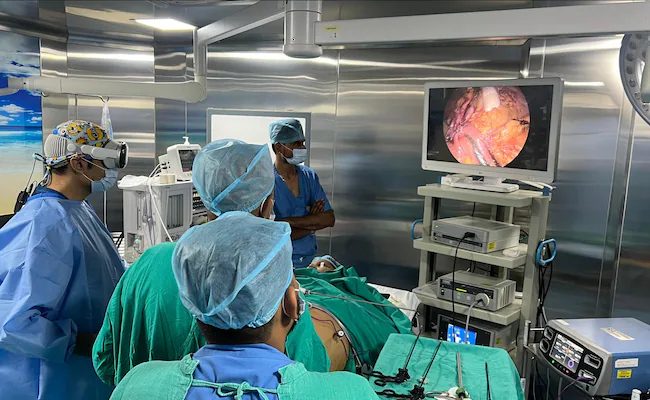In an era marked by rapid technological advancements, we have now witnessed what could be described as a marvel: the restoration of movement and sensation in a man paralyzed from the chest down. The hero of this real-life story is Keith Thomas, a 45-year-old who suffered paralysis after a diving accident in 2020. Now, thanks to the groundbreaking work of scientists at Northwell Health’s Feinstein Institutes, he has regained sensations he thought he might never feel again, all thanks to AI implants.
From quadriplegic to movement via thought
After his tragic accident, Thomas had lost mobility and sensation from his chest downwards due to damage to his C4 and C5 vertebrae. However, the cutting-edge “double neural bypass” procedure has offered him a new lease on life. The crux of this procedure involves implanting microchips in the brain that interface with AI algorithms. This algorithm creates a link between the brain and the body.
As Thomas thinks of moving his arm, these thoughts get translated into actions. The brain chip sends signals that activate electrode patches on his spine and arm muscles, resulting in movement. At the same time, tiny sensors on his fingers send touch-related data back to his brain, recreating sensation. Remarkably, he achieved all this without using the damaged part of his spinal cord.
AI Implants: a paradigm shift in Medicine and Technology
Such advancements stand out prominently.. The convergence of AI and neurotechnology is heralding a new age of medical miracles. From AI applications that understand protein languages and help design new proteins to those predicting cancer treatment outcomes, the fusion of technology and biology is redefining therapeutic boundaries.
Elon Musk’s Neuralink and similar ventures spearhead the development of mind-machine interfaces. However, what sets the “double neural bypass” apart is its capability to provide both touch feedback and restore movement outside laboratory environments.
The future is now
It’s undeniable that this convergence brings endless possibilities. We might soon witness even more invasive procedures aiming to redefine human capabilities. Unfortunately with these come ethical implications. As technology continues to blur the lines of what’s natural, we, as a society, must navigate the complex moral terrains it presents.
The story of Keith Thomas and the Feinstein Institutes’ revolutionary approach paints a hopeful picture for over 100 million globally suffering from paralysis or movement challenges. Within just a short span post his surgery, Thomas regained his arm strength and felt sensations even without the system’s activation. It is a testament to human ingenuity and resilience and a glimpse into a future where AI might hold the key to redefining human capabilities.



